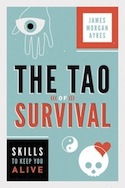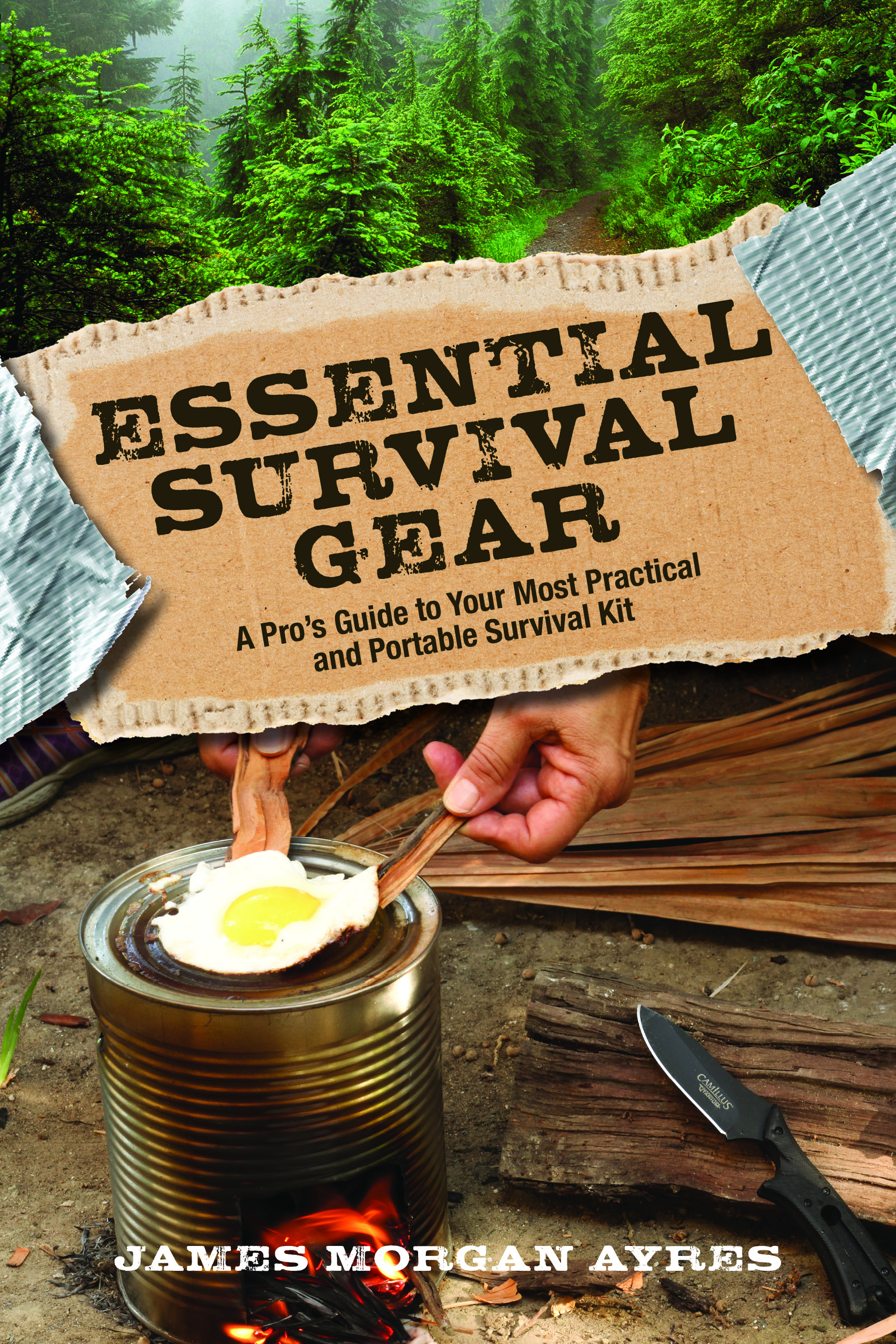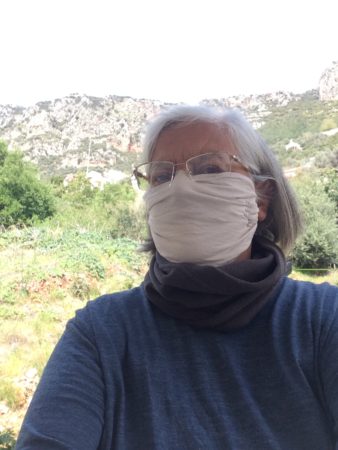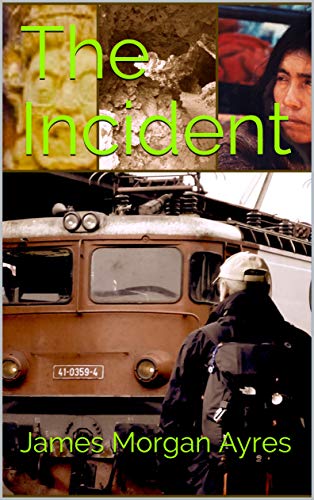
An Approach to Survival:
There are other books, some of them good books (I list a few in the “Suggested Reading” section in the back of this book), that go deep into wilderness survival, primitive skills, disaster preparedness and other situation-specific preparedness. This is all useful knowledge, but these skills are not foundational to staying alive in a crisis.
Knowing how to rub sticks together to make fire won’t help you when a building is collapsing around you. Having two weeks supply of food and water at home won’t do you any good on a hijacked plane. Your end-of-the-world Hummer loaded with supplies might help—the guys who have stolen it from your parking lot, that is. This is not a book about “survivalism,” guns, Rambo knives, stockpiling military rations or wearing camouflage. Nor is it about fearmongering or buying into the Terrorist Derangement Syndrome now afflicting the United States.
This is a book about personal empowerment and the ability to survive and flow with life’s vicissitudes. As flight attendants tell us, when the oxygen masks come down put on yours first before trying to help another. If you are not able to help yourself, you cannot help others. If we first begin with ourselves, we can then help our loved ones to survive. Then we can reach out and help those in our immediate community and even others in distant lands—a subject addressed in the Afterword.
Virtually every survival book starts by counseling its readers not to panic, to focus on evaluating and solving the immediate problem, to be adaptable, to press on when losing heart. None of them tell you how to acquire the states of mind and emotional controls that are necessary to accomplish these things. The acquisition and development of these mental and emotional skills, and other powerful mind/body skills, are the primary focus of The Tao of Survival.
The conceptual base for certain of these skills originated with Taoist philosophy, science, meditation, mind/body skills and martial arts. These concepts and skills have now been translated into practices compatible with the Western temperament and have been taught to elite military personnel, covert operators and others who work in high-threat zones, and to many ordinary people who wish to improve the quality of their lives and their odds of survival.
A Short Overview of Taoism and Its Practices That Relate to Survival
Tao is pronounced Dao. Tao translates as: the way, the path, the underlying principle and natural flow of the universe.
As China is the mother culture of Asia, Taoism is the fountainhead of Asian philosophy and science. Early Taoism was devoted to determining the foundational principles of our universe by observation, analysis and reflection. From this study, over centuries flowed meditation methods, Traditional Chinese Medicine, health practices such as Chi Gung, many martial arts, Feng Shui, and practical skills useful in everyday life and in extreme survival conditions. Taoists approach life and all of its pleasures and problems by being in harmony with the way, the natural flow of the universe, the Tao.
Taoism has its roots in prehistoric shamanism. As Chinese culture developed, the concepts of Tao also developed. When Buddhism arrived from India, certain elements of it were combined with Taoism and transformed into Chan Buddhism, a spare and stripped-down version centered around Taoist concepts and skills. Chan was exported to Japan, and translated became Zen. Zen is better known in the West due to many Japanese teachers coming to the West after World War II with the specific purpose of teaching Zen to westerners. D. T. Suzuki, perhaps the best-known Zen teacher in the West, said, “To understand Zen you must understand the Tao.” Due to the inward-turned nature of Chinese society in the West, Chan and Taoism remained a practice confined for the most part to the Chinese community.
In the early decades of the People’s Republic of China, Taoism was suppressed. During the Cultural Revolution, people who practiced any form of Taoism, including martial arts, were actively persecuted. Taoism, and its principles, martial arts, and medicine, continued to flourish in the rich environments of Taiwan, Hong Kong and Chinese communities in the West and throughout the world. But until recently Taoism was little known outside the Chinese community. The Chinese are not by nature proselytizers.
Over centuries, branches of Taoism took on certain external artifacts and aspects of religion: priests, rituals, formal worship at temples and so on. But in its purest essence Taoism is highly individualistic, not institutionalized or ritualized and not a religion of any kind. In this book I do not address any aspects of any of the religious branches of Taoism.
From its inception, Taoism was primarily a philosophy and early form of science, with the goal of understanding and describing the nature of all things in the universe, the universe itself, man’s relation to the universe and how man could best interact with the world around him. At its core, Taoism emphasizes living in harmony with the basic principles of the universe. Certain Taoist fundamental principles have become well known in the West; for example yin and yang—the concept that for every thing there is an equal and opposite thing: light and dark; hard and soft; heat and cold; joy and sorrow. The seminal work of Taoism is the Tao Te Ching, attributed to Lao Tze.
The Warring States Period in China, from the fifth century BC to the second century BC, was a time of almost constant warfare and disruption. During this period Sun Tzu wrote the classic The Art of War, which is firmly grounded in Taoist principles, strategy and tactics. Kingdoms fell and people were forced to flee their cities and homes with little more than they could carry. They learned to be ready at all times to “leave through the eastern gate.” “Leaving through the eastern gate” has become known as a philosophical and spiritual concept, but like much in Taoist thought has a practical application. During these centuries of war, unrest and societal chaos, Taoists developed an extensive body of work focused on the practical aspects of individual and group survival in tumultuous times. It is this aspect of Taoism on which The Tao of Survival is focused.

 Sun, Apr 5, 2020: Killing Mr. Jones
Sun, Apr 5, 2020: Killing Mr. Jones Wed, Apr 1, 2020: On Hoarding
Wed, Apr 1, 2020: On Hoarding Mon, Mar 30, 2020: Masks Save Lives – Covid-19
Mon, Mar 30, 2020: Masks Save Lives – Covid-19 Sun, Mar 29, 2020: Visions of Apocalypse
Sun, Mar 29, 2020: Visions of Apocalypse Fri, Aug 23, 2019: Hijacked Twitter
Fri, Aug 23, 2019: Hijacked Twitter Sun, Aug 18, 2019: The Incident
Sun, Aug 18, 2019: The Incident Sat, Aug 10, 2019: Seas and Oceans Without End
Sat, Aug 10, 2019: Seas and Oceans Without End
Beautiful introduction to the Taoist philosophy. Just makes me want to read more. There is a calming effect even reading *about* this subject — even before you actually enter the realm of its principles. In today’s (and I know it’s a cliche) yes, hectic, crazy, confusing world, it’s good to know that there is a way to survive, not with weapons, but by changing our approach to it all. Thank you for being a guide along this path.